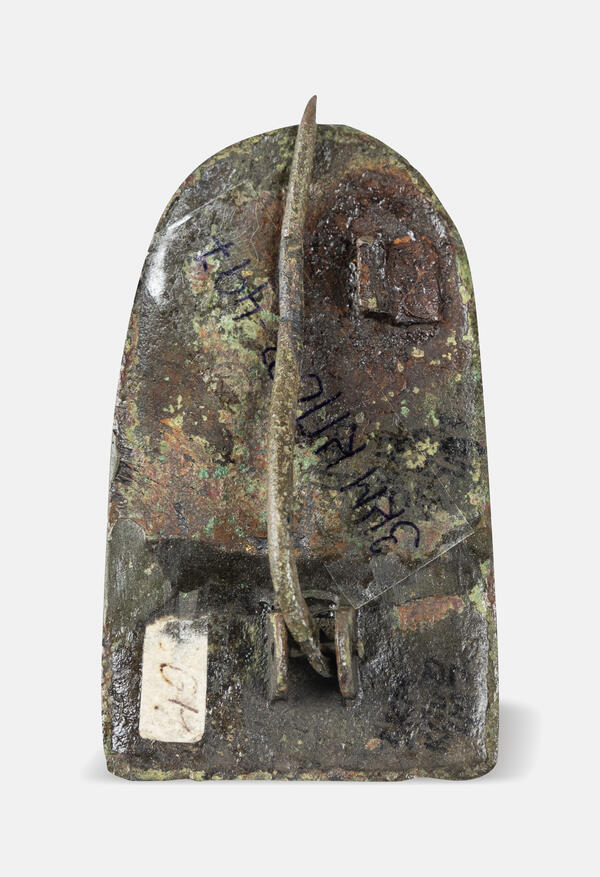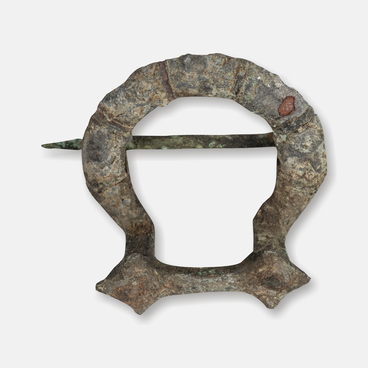In 1897, the famous Prussian graphic artist and archaeologist Johannes Heydeck participated in the excavations at the Kaup burial mound (nowadays the village of Mokhovoye, Zelenogradsk District, Kaliningrad Region). It was there that Prussia’s first tongue-shaped fibula, known as Zungenfibel in German, was found. Tongue-shaped fibulae were unique to the Baltic region and formed part of a woman’s outfit. The main women’s accessories were two tortoise-shaped (oval) fibulae. In 2012, another tongue-shaped fibula was found in the Kaliningrad Region, near the Muromskoe settlement Zelenogradsky district on the viking burial ground.
Judging by the concave back side, the fibula was most likely cast in an open one-sided mold. Like most fibulae, this one found in the Baltic region was cast in bronze. The front of the fibula depicts a fantastic four-legged animal, bent in the shape of a figure eight, biting its own body with a powerful jaw. The image of the creature’s body has been scratched in the process of wearing the fibula and rubbed to a shine in some areas. It is well known that Scandinavian jewelers copied and reinterpreted Carolingian designs when creating metal objects. In particular, the 10th-century northern European trefoil fibulae imitate sword belt distributors.
Therefore, it is not surprising that the
tongue-shaped fibulae found among Viking artifacts in Scandinavia can be traced
back to belt tips of the 7th century — early 9th century.
Tongue-shaped fibulae, which were made according to the unique tradition of
creative reinterpretation of belt fragments into details of women’s clothing,
correspond to the peak of the development of Scandinavian decorative art before
the Vikings’ decline. Tongue-shaped fibulae were very rare in Scandinavia and
unique to the Baltic region. They signified that the women who wore such
fibulae owned houses and estates and came from prominent military families.



